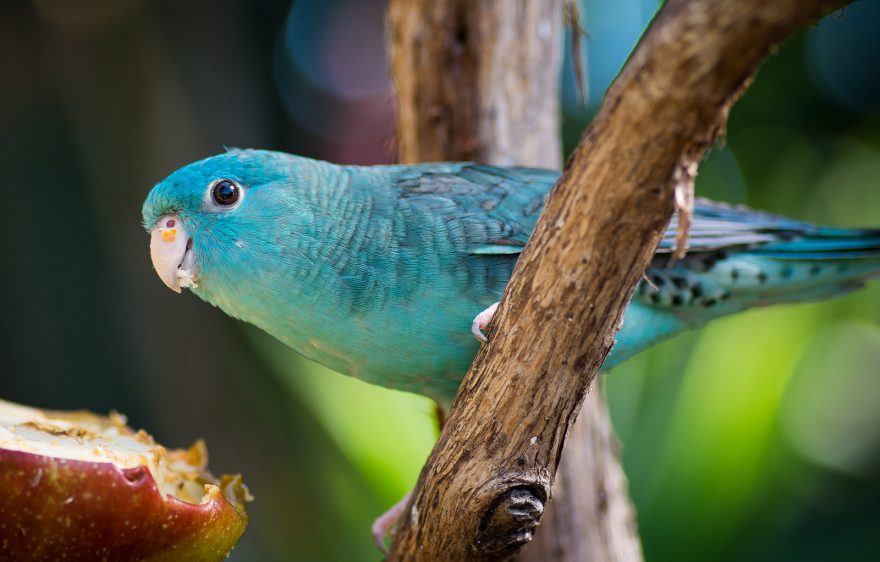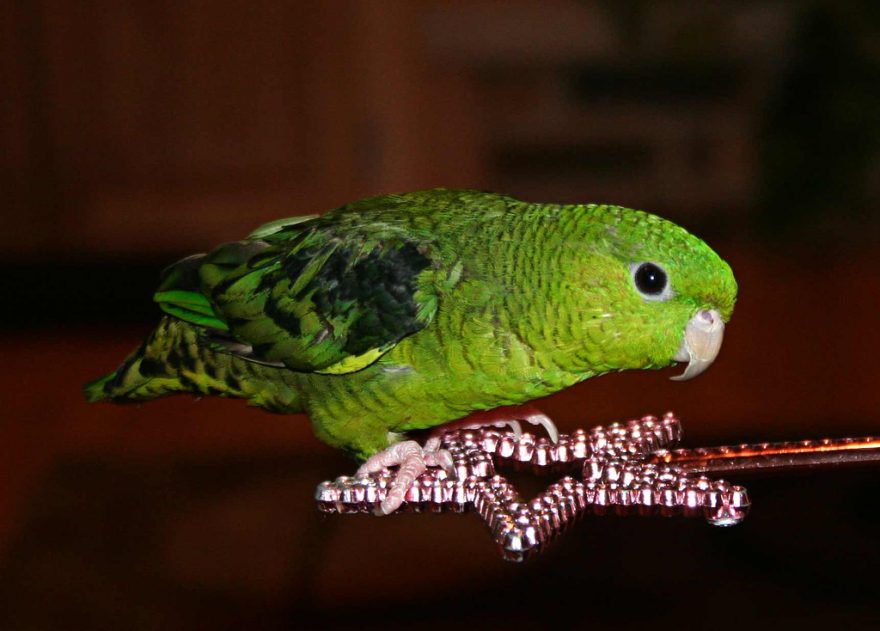The lineolated parakeet, also known as the barred parakeet or “linnie”, is a small parrot found throughout South America. Their affectionate nature and strong speech mimicking abilities make them popular as pets. The availability and price of lineolated parakeet varies significantly across different regions — from a few hundred dollars in the US and much of Europe, to several thousand dollars in Australia.

Housing & Compatibility
Lineolated parakeets can be housed as single pairs or colonies. Their compatibility with other species is largely unknown, so proceed with caution if housing them in a mixed collection.
Although traditionally bred in cages, Aviculture Hub does not condone keeping birds in enclosures that don’t allow sustained flight. An adequate amount of flying space is necessary to ensure good fitness and minimal stress. Perches placed at opposite ends of the aviary will maximize the amount of exercise received.
Non-toxic leaves and branches should be provided for chewing. They will be destructive to foliage in a planted aviary.
Breeding
Lineolated parakeets will breed throughout the year, however breeding should be discouraged during winter and extremely hot weather.
They breed in hollow logs or nest boxes lined with sawdust or pine shavings. A nest box designed for a lovebird or similar small parrot is ideal, but consider that different birds have different preferences for the size and shape of their box.
Most parrots prefer a nest box opening just large enough to squeeze through, so a separate hatch for cleaning and inspection should be added to the nest box. Different nesting receptacles should be offered to determine which the pair prefers to use. Disused boxed should be removed when laying has commenced.
Lineolated parakeets generally lay between 3 and 5 eggs. Young or inexperienced birds may lay as few as two. The hen will incubate the eggs alone for roughly three weeks. After hatching, the young birds will remain in the nest for six weeks before fledgling. They will be fully independent from their parents approximately three weeks after fledging.
After the second or third clutch in a year, the nesting box should be removed. Over-breeding can substantially effect the health and wellbeing of the lineolated parakeet hen.
Sexing
The tail and rump barring is more prominent in males than females.
Mutations
There are dozens of established mutations. These are roughly divided into three groups: Green series, which includes dark green, olive, cobalt, and lutino (yellow); blue series, which encompasses turquoise, parblue, cream.
In layman’s terms, you can buy lineolated parakeets in green, yellow, light blue, dark blue, and white.
Due to the proliferation of colour mutation, “pure normal” green birds are becoming increasingly rare and demand a higher price than mutations.

Diet & Feeding
A quality small parrot seed mix forms the basis of the lineolated parakeet’s diet. Seed should be stored in an airtight plastic container to prevent exposure to vermin and moisture. Seed can be soaked or sprouted to improve its nutritional value.
Many breeders prefer to feed pellets instead of seed. Pellets provide a more balanced intake of vitamins and minerals and produce less waste. Commercial supplements such as egg & biscuit mix can be added to the diet to provide additional protein during the breeding season.
A good diet includes a mix of fruits and vegetables, such as apple, pear and corn. Leafy green vegetables are essential— silverbeet (chard), bok choy, kale, and endive are particularly nutritious.
Do not feed anything from the list of forbidden foods.
Health
A strict worm control regime and regular preventative treatment for bacterial and fungal infections is critical to ensure the long-term health of any bird.
A well cared-for lineolated parakeet should live for 10-15 years.
Hello. Thanks for the great advice. Could you tell me the exact size entrance hole for their nest box please?
I colony breed my Linnies along with Cockatiels, they all get on extremely well but if i could make the entrance hole just the right size for the Linnies boxes then they would be safe incase of younger Cockatiels being inquisitive. Thanks for reading. Ken Brown.
Hello,,,my Linnie,,Smokey,,just laid an egg! When I purchased Smokey I was told it was male. I also have another Linnie,,Bandit which I was also told is male. For months I have been trying to get them to tolerate each other. But thinking they were both males I just figured it is what it is.
Now that I know I have a male and female do I have to worry about babies? They do like to go into each other’s cage when they can sneak in,,,if the bird is not in there. I need some advice please,,,I am still shocked the have found an egg.
Thank you